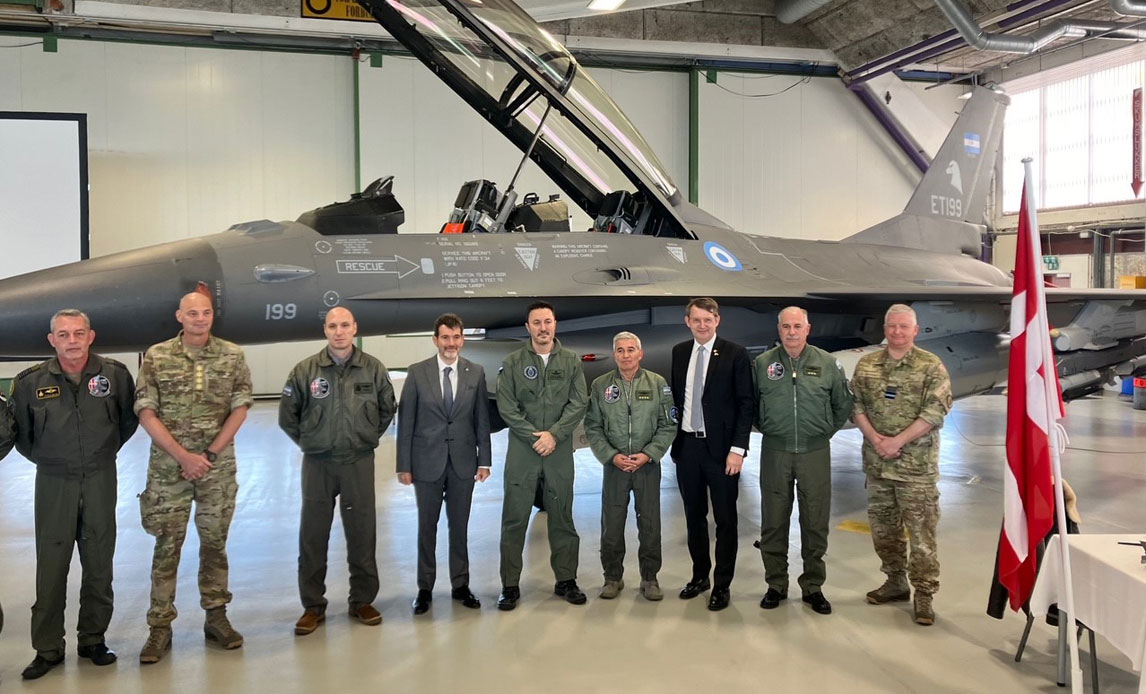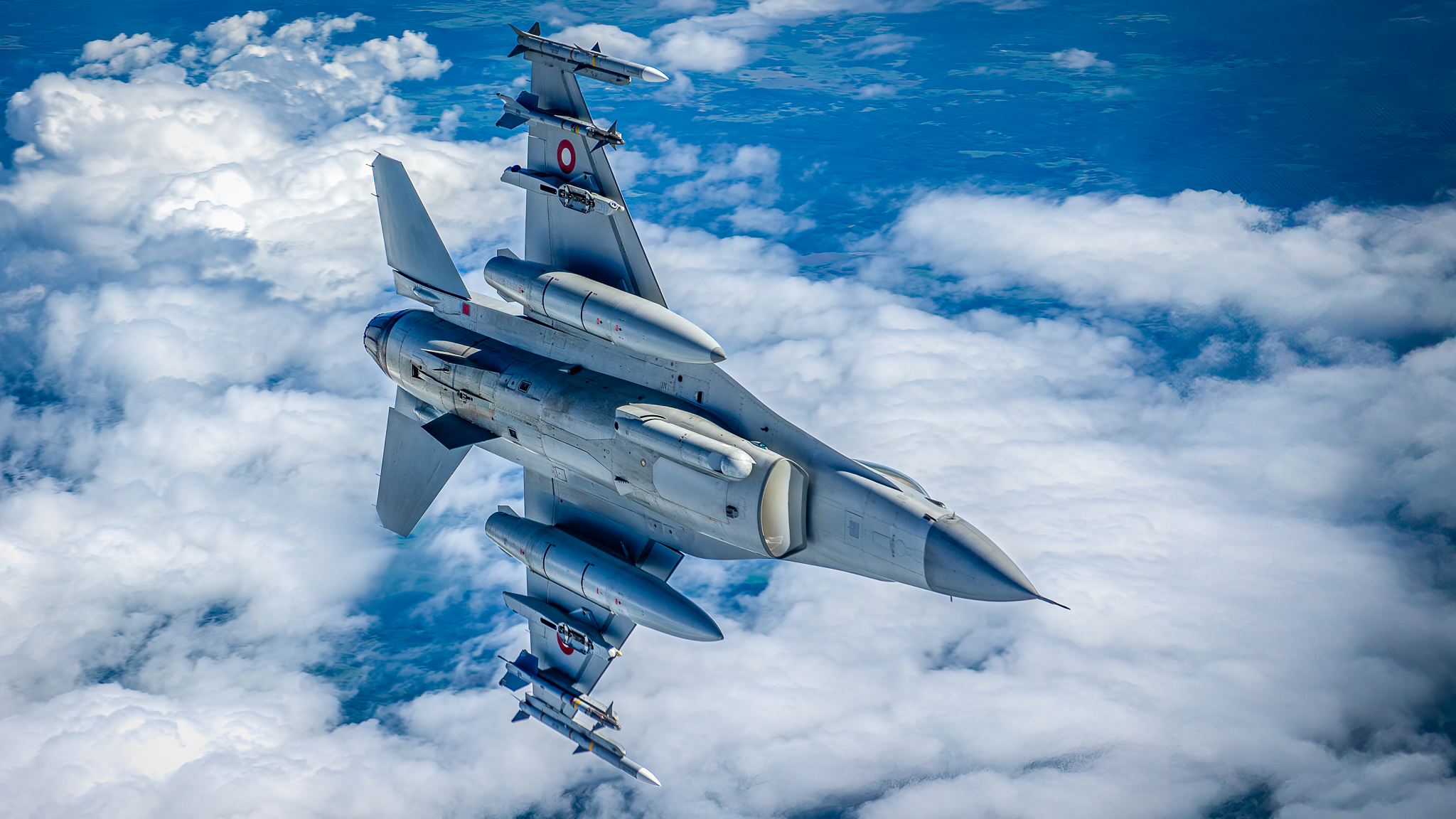Argentina Finalizes Purchase of F-16 Aircraft from Denmark
In a significant step towards modernization and recovery of its military capabilities, Argentina signed the purchase of a fleet of 24 F-16 A/B Fighting Falcon combat aircraft from Denmark, marking a historic milestone in the renewal of its Air Force, which once again has supersonic capability.
The announcement was made by the Argentine Minister of Defense, Luis Petri, who traveled to the Nordic country to sign the acquisition contract. The Argentine president, Javier Milei, participated in the event remotely.
«In Denmark, we are about to change the generation of our fleet of combat aircraft with new F-35 planes. Therefore, I am very pleased that the Danish F-16 aircraft, which have served us well over the years and have been thoroughly maintained and technologically updated, are now being used in the Argentine Air Force. With the agreement, we strengthen defense cooperation between Denmark and Argentina, while Argentina becomes part of the global F-16 family,» said Danish Defense Minister Troels Lund Poulsen.
«In terms of trade, we have had exemplary cooperation both with the Argentine Air Force and with the Argentine and the United States governments. With trade, we also strengthen our defense cooperation with the U.S.,» he added.
A lengthy process, excessively long
The acquisition of the F-16s is the result of a long process of analysis and negotiations that began almost a decade ago. After the decommissioning of the Mirage-Dagger in 2015, the FAA (Argentine Air Force) began to evaluate various options to modernize its fleet, considering factors such as cost, performance, and availability. In 2023, the United States finally gave the green light for the sale of F-16s to Argentina, paving the way for the completion of the purchase.
Left by the wayside, for technical, economic, and political reasons, were offers from Spain for the Mirage F-1, IAI Kfir from Israel, the Russian MiG-35 (which never received serious consideration by the FAA), the KAI FA-50 from South Korea, Mirage-2000 from France, the Sino-Pakistani option for the JF-17 Block III Thunder, and India’s offer for the HAL Tejas Mk1A. A real parade of combat aircraft that only served to generate illusion, and ultimately, frustration.
See also: Brigadier General Isaac at FIDAE: “The F-16s purchased from Denmark will soon be flying”
A qualitative leap for the Argentine Air Force
Finally, the North American offer for the F-16 A/B fighters from the Royal Danish Air Force (Flyvevaben or RDAF), which are being decommissioned, replaced in their functions by the modern Lockheed Martin F-35A, prevailed. The first F-16s arrived in Denmark in 1980, locally assembled by the national aerospace company SABCA, acquiring 77 units of different blocks in successive purchases.
Despite the age of the material, the aircraft were subject to routine mid-life update and modernization works (MLU), which allowed their electronics and armament capability to be matched with the modern F-16 blocks 50/52, representing a significant qualitative leap in capabilities for the Argentine Air Force.
These combat aircraft will allow the FAA to:
- Improve interception capability, thanks to its supersonic speed and great acceleration.
- The Air Force acquires beyond visual range (BVR) combat capability.
- For the first time, the FAA will have precision-guided munitions for air-to-ground missions.
- Allow greater integration with the sister Chilean Air Force (FACh), which has operated the F-16 for years, while promoting regional stability through capability parity.
- Overall, the incorporation of the F-16s will mean a very relevant injection of technology for the FAA, being its first fourth-generation combat aircraft.

What does the purchase include?
Reliable sources told Aviacionline that the acquisition contract for the F-16 MLU fighters includes the purchase of modern air-to-air and air-to-surface weaponry, as well as spare parts, training, peripherals, etc.
The negotiated weapon package would include:
- Air-to-air missiles AIM-120 AMRAAM with a 120 km range, possibly the C-7 version.
- Short-range air-to-air missiles AIM-9M Sidewinder (already operated by the FAA in small numbers in its A-4AR).
- Air-to-surface missile AGM-65 Maverick.
- Cluster bombs CBU-99/100.
- INS/GPS-guided bombs GBU-31 JDAM.
- Laser-guided bombs GBU-10 (2,000 pounds) and GBU-12 (500 pounds) Paveway II.
- Glide bombs GBU-39 SDB.
- Anti-radiation air-to-surface missiles AGM-88 HARM.

The contract also includes that the F-16s come equipped with targeting and reconnaissance pods; self-protection and electronic warfare systems; Joint helmet mounted cueing system (JHMCS) vision targeting helmets; eight spare engines, training missiles, tools, rotables, and spare parts.
We also learned that, according to the planned schedule, the first four F16B two-seaters and two F-16A single-seaters will arrive in Argentina in 2025. The deliveries will be completed by 2028. The home base for the aircraft will be the VI Air Brigade in Tandil, and maintenance will be performed at the Río Cuarto Material Area.

/https://aviacionlinecdn.eleco.com.ar/media/2024/04/F-16-argentina-firma-dinamarca.jpeg)
Para comentar, debés estar registradoPor favor, iniciá sesión